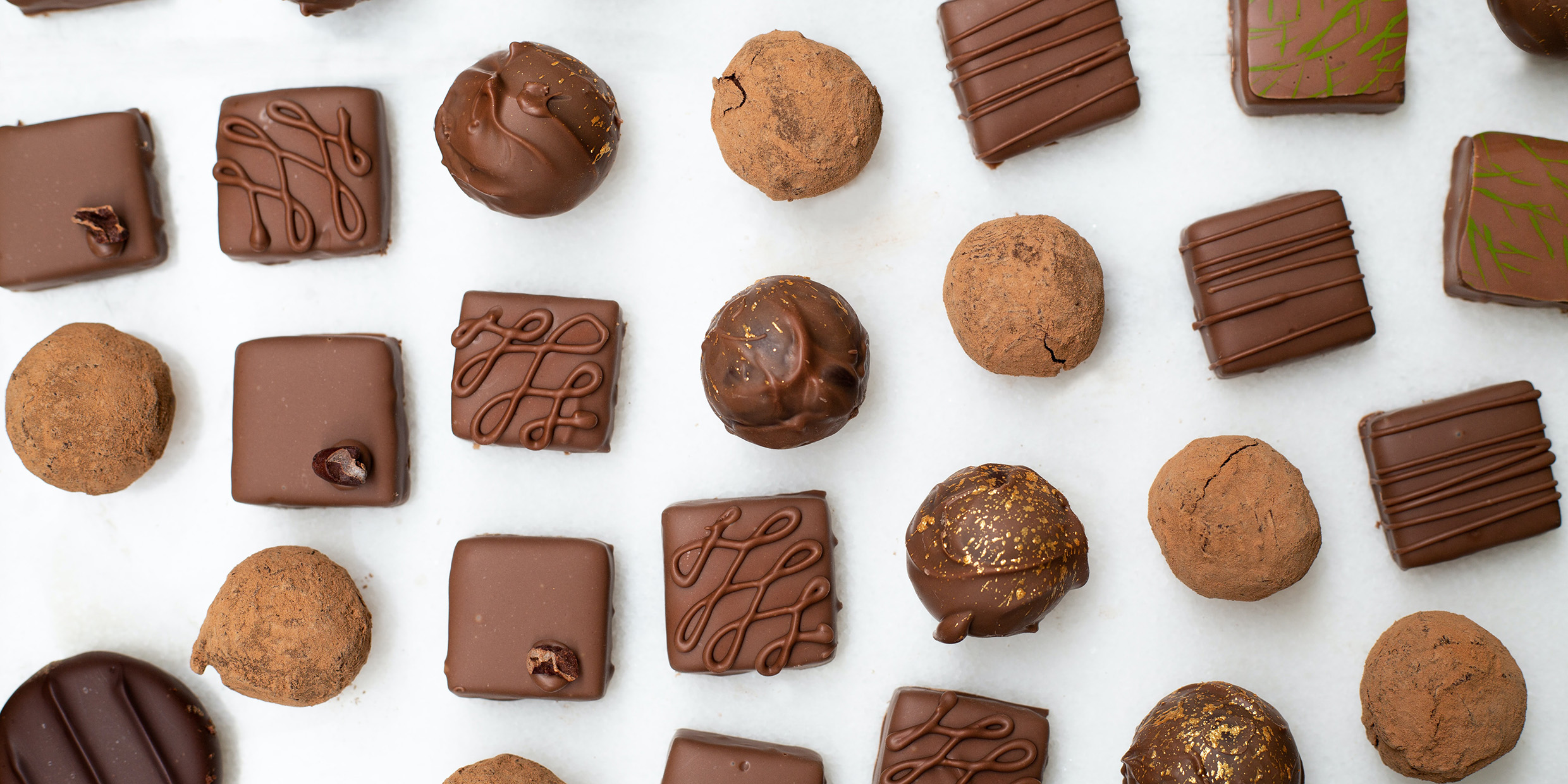Originally published 22 February 1993
The heart-shaped boxes are empty. The milk chocolate hearts have been divested of their red foil wraps. Valentine’s week has come and gone.
Chocoholics must now be more circumspect in our favorite form of substance abuse.
We know who we are. And we know what we want for holiday gifts. Not flowers. Not intimate apparel. Not mushy nor comic cards.
We’ll take C8H11N.
Or whatever it is in chocolate that gives us that chocolate buzz.
It’s not the taste nor smell that turns us on, although that may be part of it. No, it’s something else in chocolate that accounts for our addiction. Something dangerously chemical that works its magic in some primal corner of the brain. Something, well — chocolately.
It may have to do with sex. Chocolate contains phenylethylamine—the chemical whose molecular formula appears above. The stuff is a stimulant. It pumps up the blood pressure, sets the heart fluttering, heightens sensation. A kind of mini sexual climax.
The thrill of chocolate, like the thrill of sex, may be partly a matter of conditioning. Chocolate has a forbidden aura about it. It is perceived as naughty, decadent, morally delinquent. Purveyors of chocolate know how to play upon the sexual connection. They tease us with sensual images, lush colors, whispered enticements. They want us to believe that the famous lady from Coventry prepared for her risque ride by nibbling Godiva Chocolates.
Advertising may be part of chocolate’s mystique, but don’t dismiss the C8H11N.
The brain is a chemical machine. Certain chemicals modify neural circuits. They intrude themselves into the busy crannies where neurons exchange signals. They suppress or excite the crackle of electro-chemical activity that makes the mind work. They quell psychotic behaviors, or set the mind reeling into hallucination.
And, apparently, they inspire chocoholics to wolf down embarrassing quantities of the stuff.
Call it self-medication. Call it psychoexperimentation. Call it the love-fool’s way of getting high. Call it whatever you want, but give us chocolate.
There are lively chemicals in chocolate besides phenylethylamine. There’s theobromine, a stimulant closely related to caffeine, and methylxanthine, another turn-on.
Theobromine, by the way, takes its name from the plant Theobroma cacao, whose fermented seeds supply us with chocolate. The plant was undoubtedly named by a chocoholic botanist: theobroma is Greek for “food of the gods”;
“Chocolate” itself has an Aztec origin. The Aztecs had a godlike appreciation for xocolatl, as they called it. It is said to have been the aphrodisiac of choice for nobles at the Aztec court, who presumably plied their partners with gobs of fermented xocolatl seeds on every gift-giving occasion.
You don’t need a degree in biochemistry to recognize a drug that does pleasant things in the brain. The astonishing thing is, all of the stimulating ingredients of chocolate, like other chemicals that enliven or sedate the brain, are made of just four kinds of atoms — hydrogen, carbon, nitrogen, and oxygen — packaged in molecules of different shape.
It’s the shape that’s the key. Molecules achieve their effects by working like keys in locks. A molecule with the right shape will lock or unlock activity in the brain. The shape of theobromine, for example, resembles the tail of the energy-supply molecule ATP, one of the most important molecules in living things. This similarity of shape presumably allows theobromine to turn a key in some secret lock, causing neurons to spit and sputter, tricking the body into a chocolate fit.
Phenylethylamine, chocolate’s sex-substitute, has a shape that closely resembles the body’s own norepinephine and dopamine, molecules that transmit signals between neurons in the brain. A bite of chocolate contains only a few dozen milligrams of phenylethylamine, but the sneaky molecules seem to have no trouble making their way to those parts of the brain that cause us to be moody, lovesick, and prone to depression. A chocolate binge may not be as good as sex at alleviating these melancholy afflictions, but it helps.
At least that was the word down at our local chapter of Chocoholics Anonymous, as we polished off the last of our Valentine’s gifts.
Last week’s holiday provided a socially-acceptable license to stuff our brains with whatever chemicals are the secret ingredients of chocolate. Now we’ll need to be more discrete. We’ll hide our bonbons behind the books in the bookcase. We’ll snitch chocolate chips from the bag in the pantry that is reserved for making cookies. We’ll pour more chocolate sauce than is really proper onto that dish of chocolate ice cream.
And we’ll wait for Easter for another chance to legitimately overindulge on our drug of choice.



